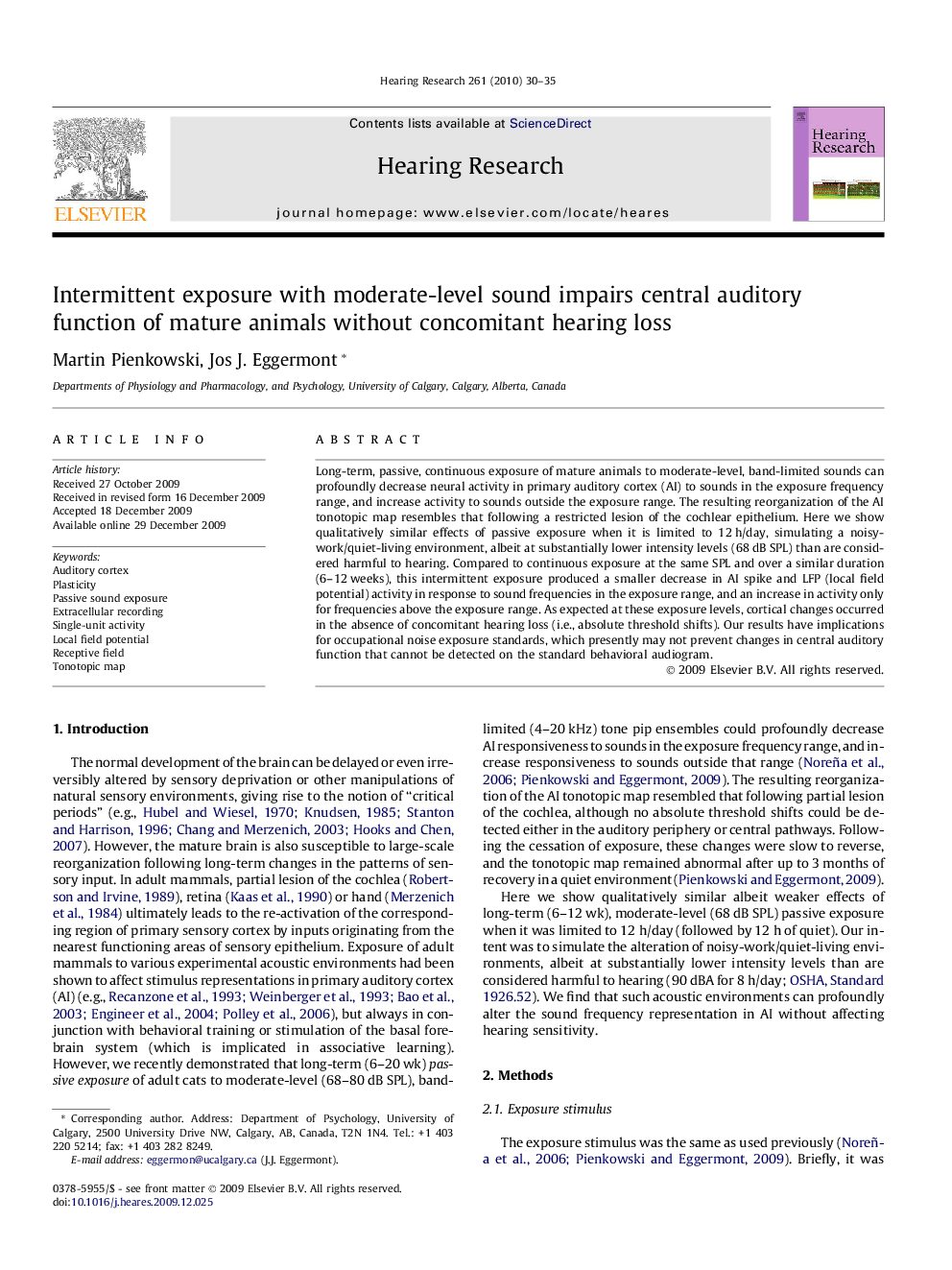| Article ID | Journal | Published Year | Pages | File Type |
|---|---|---|---|---|
| 4355664 | Hearing Research | 2010 | 6 Pages |
Long-term, passive, continuous exposure of mature animals to moderate-level, band-limited sounds can profoundly decrease neural activity in primary auditory cortex (AI) to sounds in the exposure frequency range, and increase activity to sounds outside the exposure range. The resulting reorganization of the AI tonotopic map resembles that following a restricted lesion of the cochlear epithelium. Here we show qualitatively similar effects of passive exposure when it is limited to 12 h/day, simulating a noisy-work/quiet-living environment, albeit at substantially lower intensity levels (68 dB SPL) than are considered harmful to hearing. Compared to continuous exposure at the same SPL and over a similar duration (6–12 weeks), this intermittent exposure produced a smaller decrease in AI spike and LFP (local field potential) activity in response to sound frequencies in the exposure range, and an increase in activity only for frequencies above the exposure range. As expected at these exposure levels, cortical changes occurred in the absence of concomitant hearing loss (i.e., absolute threshold shifts). Our results have implications for occupational noise exposure standards, which presently may not prevent changes in central auditory function that cannot be detected on the standard behavioral audiogram.
